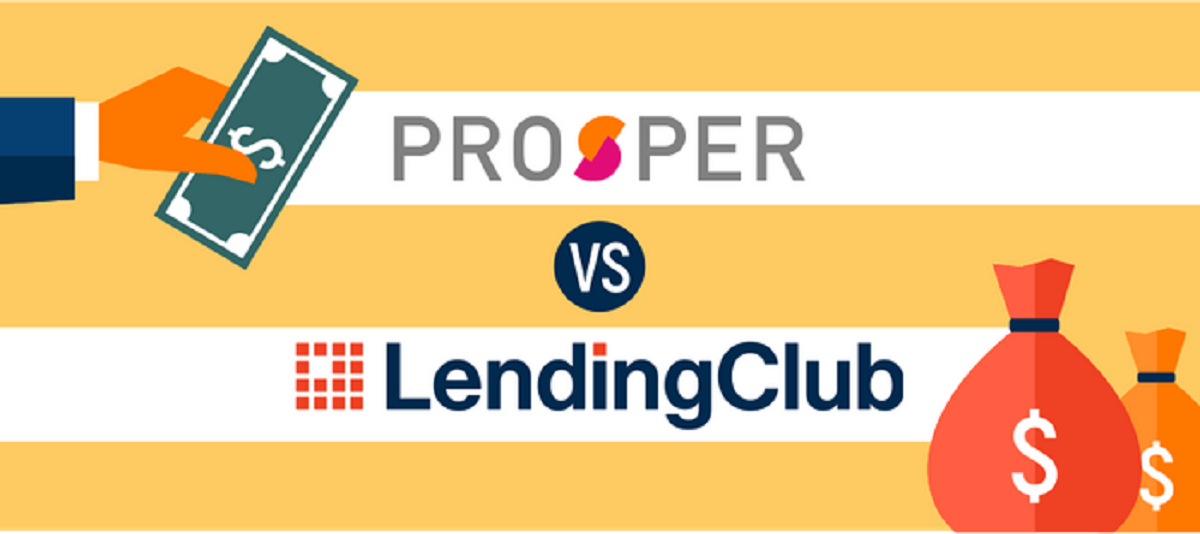Introduction
Peer-to-Peer (P2P) lending has gained significant popularity in recent years as an alternative investment opportunity. By connecting borrowers directly with lenders through online platforms, P2P lending offers individuals the chance to earn attractive returns on their investments, while borrowers gain access to much-needed funding outside of traditional financial institutions.
In essence, P2P lending cuts out the middleman and creates a more direct, transparent, and efficient lending process. It offers a win-win situation for both lenders and borrowers, with lenders benefiting from higher interest rates compared to traditional savings accounts or government bonds, and borrowers gaining access to funds with potentially lower interest rates than those offered by banks.
With P2P lending, individuals can invest in a diverse range of loans, including personal loans, business loans, student loans, and real estate loans. This provides investors with the opportunity to diversify their portfolios and mitigate risks.
However, it’s important to recognize that investing in P2P lending comes with its own set of risks. The loans are typically unsecured, meaning there is a risk of default by the borrower. Additionally, the P2P lending market is relatively new and less regulated compared to traditional financial markets, which may expose investors to potential fraud or platform failure.
In this article, we will guide you through the process of investing in P2P lending. We will explore the steps to get started, the risks to consider, and how to choose the right platform. Additionally, we will provide tips for creating a diversified loan portfolio, evaluating and selecting loans, and managing your P2P lending investments.
Whether you are a seasoned investor looking to diversify your portfolio or a beginner exploring investment options, this guide will equip you with the knowledge and tools needed to navigate the world of P2P lending successfully. So, let’s dive in and explore the exciting opportunities that P2P lending has to offer!
What is Peer-to-Peer Lending?
Peer-to-Peer (P2P) lending, also known as marketplace lending, is a form of borrowing and investing that connects individuals or businesses in need of funds with investors willing to lend money. Unlike traditional lending where banks or financial institutions act as intermediaries, P2P lending platforms facilitate direct lending between borrowers and lenders.
Through P2P lending, borrowers can access funding more easily and quickly compared to traditional lending channels. This is particularly beneficial for individuals or small businesses who may face challenges securing loans from banks due to strict requirements or limited credit history.
On the other hand, investors have the opportunity to earn attractive returns by lending money to borrowers. The interest rates offered through P2P lending are generally higher than traditional savings accounts or government bonds, providing investors with a chance to potentially grow their wealth.
One of the key advantages of P2P lending is its ability to offer diversification. Investors can spread their investment across multiple loans, reducing the impact of any default or late payments by borrowers. By diversifying their loan portfolio, investors can mitigate risk and potentially increase their overall returns.
P2P lending platforms provide a user-friendly interface where borrowers can create loan listings, outlining their loan requirements and reasons for borrowing. Investors can review these listings and decide which loans they would like to fund based on the borrower’s credit profile, the purpose of the loan, and other relevant information provided.
Once a borrower’s loan is fully funded by investors, the funds are transferred to the borrower, who then repays the loan with interest over a predetermined period. P2P lending platforms typically handle the collection and distribution of loan repayments, making the investment process convenient and streamlined for both borrowers and lenders.
It’s important to note that P2P lending comes with its own set of risks. The loans are typically unsecured, meaning there is no collateral to back the loan. This increases the risk of default by the borrower, and investors may not recover their full investment in case of borrower default. The P2P lending market is also less regulated compared to traditional financial institutions, which may expose investors to potential fraud or platform failure.
Overall, P2P lending presents an innovative and accessible investment opportunity for individuals and businesses alike. It offers an alternative way to borrow and invest, providing greater flexibility and potential returns. However, it’s crucial to understand the risks involved and thoroughly research and choose the right P2P lending platform before making any investments.
Understanding the Risks
While P2P lending offers several advantages, such as higher potential returns and increased accessibility, it’s essential to have a clear understanding of the risks associated with this type of investment. By being aware of these risks, you can make informed decisions and take necessary precautions to protect your investment.
1. Default Risk: P2P lending involves lending money to individual borrowers or small businesses, often without collateral. This means there is a risk that borrowers may default on their repayment obligations, resulting in investors losing a portion or all of their investment. To mitigate this risk, carefully assess the creditworthiness and financial stability of potential borrowers before investing in their loans.
2. Platform Risk: P2P lending platforms act as intermediaries between lenders and borrowers. While they provide a convenient platform for loan transactions, there is a risk of platform failure or bankruptcy. In such cases, investors may face challenges in recovering their investments. Before investing, research and choose a reputable and well-established platform to minimize this risk.
3. Economic Risk: P2P lending is not immune to economic downturns. During an economic recession or financial crisis, borrowers’ ability to repay loans may be compromised, leading to an increase in loan defaults. It’s crucial to diversify your loan portfolio across different sectors and loan types to mitigate the impact of economic fluctuations on your investments.
4. Liquidity Risk: P2P lending investments are generally illiquid, meaning it may be challenging to sell or exit your investments before the loan term expires. Unlike stocks or bonds traded on public markets, P2P loans are not easily tradable. As an investor, be prepared to hold your investments until the loans are repaid, and consider your investment timeline accordingly.
5. Regulatory Risk: P2P lending is a relatively new industry, and regulations surrounding it may vary across different jurisdictions. Changes in regulations or new regulatory requirements could impact the operations of P2P lending platforms and the overall industry. Stay informed about the regulatory landscape and any potential changes that may affect your investments.
6. Reinvestment Risk: As loan repayments are received, investors have the option to reinvest their funds into new loans. However, there is a risk that suitable loan opportunities may be limited, especially during economic downturns or periods of low borrower demand. Having a well-diversified loan portfolio can help mitigate reinvestment risk by spreading investments across various loans.
By understanding and acknowledging these risks, investors can take appropriate measures to protect their investments. Conduct thorough research, diversify your loan portfolio, and carefully assess borrowers and platforms to minimize risk exposure. Additionally, regularly monitor your P2P lending investments and adjust your strategies if needed to adapt to changing market conditions.
Steps to Get Started in Peer-to-Peer Lending
Getting started in peer-to-peer (P2P) lending is an exciting opportunity to diversify your investment portfolio and potentially earn attractive returns. Here are the key steps to follow when venturing into the world of P2P lending:
1. Educate Yourself: Before diving into P2P lending, take the time to educate yourself about the industry. Understand how P2P lending platforms work, the risks involved, and the potential returns you can expect. Read articles, watch videos, and explore online forums to gain insights from experienced investors and borrowers.
2. Research P2P Platforms: There are numerous P2P lending platforms available, each with its own features, loan offerings, and investor requirements. Research different platforms and compare their fees, loan diversification options, borrower screening processes, and historical performance. Choose a platform that aligns with your investment goals and risk tolerance.
3. Sign Up and Verify Your Account: Once you’ve chosen a P2P lending platform, sign up and create an account. Fill out the necessary personal and financial information and complete any required verification steps to ensure your account is secure and compliant with regulatory requirements.
4. Determine Your Investment Amount: Decide on the amount of money you are willing to invest in P2P lending. Consider your overall investment goals, financial situation, and risk appetite when determining the appropriate investment amount. It is advisable to start with a smaller amount initially and gradually increase your investment as you gain more experience and confidence in the platform.
5. Choose Loan Types: P2P lending platforms offer a variety of loan types, such as personal loans, business loans, student loans, and real estate loans. Evaluate each loan type’s risk and return potential, and determine which types align with your investment strategy. Consider diversifying your portfolio by investing in a mix of loan types to spread your risk.
6. Set Investment Criteria: Establish your investment criteria to help you narrow down the loan listings that fit your preferences. Criteria may include minimum credit score, loan term, loan purpose, and borrower profile. Having clear investment criteria will streamline the loan selection process and ensure you are investing in loans that meet your risk and return objectives.
7. Start Investing: Once you’ve set your investment criteria, start browsing through the loan listings available on the platform. Review the details provided for each loan, such as borrower information, loan purpose, risk rating, and interest rate. Carefully assess the borrower’s creditworthiness and repayment history before making investment decisions.
8. Maintain a Diversified Portfolio: Diversification is key to managing risk in P2P lending. Spread your investments across multiple loans and loan types to minimize the impact of any defaults or late repayments. Avoid concentrating your investments in a few loans to protect your overall portfolio performance.
9. Monitor Your Investments: Regularly monitor the performance of your P2P lending investments. Keep track of repayments, interest earned, and any updates or changes in the borrower’s situation. Stay alert to any potential red flags that may affect the repayment ability of the borrowers.
10. Reinvest and Adjust: As you receive loan repayments, evaluate your reinvestment options. Reinvesting your funds into new loans will keep your money working, allowing you to compound your returns. Additionally, periodically review and adjust your investment strategy based on market conditions, your risk tolerance, and investment goals.
By following these steps, you can confidently enter the world of P2P lending and commence your investment journey. Remember to stay informed, diversify your portfolio, and monitor your investments to maximize your chances of success in this alternative lending space.
Researching and Choosing the Right Platform
When it comes to investing in peer-to-peer (P2P) lending, one of the most critical steps is researching and choosing the right platform. With numerous platforms available, each with its own features and offerings, it’s important to carefully evaluate your options before making a decision. Here are some key factors to consider:
1. Reputation and Track Record: Look for platforms with a solid reputation and a proven track record in the industry. Research their history, how long they have been operating, and their performance in terms of loan originations, default rates, and investor returns. Platforms that have been around for a while and have a successful track record are generally more reliable and trustworthy.
2. Loan Types and Diversification: Consider the loan types offered by the platform. Some platforms may specialize in personal loans, while others may focus on business loans or real estate loans. Assess if the available loan types align with your investment goals and risk tolerance. Additionally, evaluate the platform’s ability to provide loan diversification, allowing you to spread your investments across various loan types and minimize risk.
3. Borrower Screening Process: Dig deeper into the platform’s borrower screening process. Find out how they assess the creditworthiness and financial stability of borrowers. Platforms that employ rigorous underwriting standards and conduct thorough borrower evaluations are more likely to attract reliable and trustworthy borrowers. A robust screening process can reduce the risk of defaults and increase the likelihood of receiving timely repayments.
4. Transparency and Reporting: Transparency is crucial when it comes to P2P lending platforms. Explore the platform’s website and review the available information on loan performance, default rates, and historical data. A reputable platform will provide transparent and comprehensive reporting, allowing you to make informed investment decisions. Look for platforms that disclose relevant information and provide regular updates on borrower repayments and your investment performance.
5. Fees and Costs: Evaluate the fees and costs associated with investing on the platform. Some platforms charge fees for transactions, loan servicing, or early exit options. Understand how these fees impact your overall returns and factor them into your investment strategy. Compare the fee structures of different platforms and choose the one that offers a fair balance between fees and the services provided.
6. Platform Security: Consider the security measures implemented by the platform to protect investors’ funds and personal information. Look for platforms with robust security protocols, such as strong encryption, two-factor authentication, and secure data storage. A secure platform will give you peace of mind knowing that your investments and personal data are safe.
7. Investor Support and Education: Assess the level of investor support and educational resources offered by the platform. A platform that provides access to educational materials, investment guides, and responsive customer support can be valuable, especially for beginner investors. Look for platforms that offer assistance and resources to help you make informed investment decisions.
8. Reviews and Recommendations: Read reviews and seek recommendations from other investors who have experience with the platform. Consider joining online P2P lending communities or forums where investors share their insights and experiences. Feedback from others can provide valuable insights into the platform’s strengths, weaknesses, and overall user satisfaction.
By thoroughly researching and evaluating P2P lending platforms, you can choose the one that best aligns with your investment goals and risk appetite. Remember that each platform has its own unique features and characteristics, so take the time to understand them and make an informed decision. Investing through a reputable and reliable platform will enhance your P2P lending experience and set you up for success in this alternative investment strategy.
Setting Up Your Account
Once you have chosen a peer-to-peer (P2P) lending platform to invest with, the next step is to set up your account. The account setup process is typically simple and straightforward, and it involves several key steps to ensure your account is secure and ready to start investing:
1. Registration: Begin by visiting the P2P lending platform’s website and locating the registration page. You will usually find a “Sign Up” or “Register” button prominently displayed. Click on it to start the registration process.
2. Personal and Contact Information: Provide the required personal and contact information to create your account. This may include your full name, email address, phone number, and residential address. Ensure that you provide accurate information to comply with legal and regulatory requirements.
3. Identity Verification: P2P lending platforms typically have a verification process to confirm your identity and prevent fraudulent activities. You may be asked to upload a copy of your identification document, such as a passport or driver’s license, and possibly provide additional documentation to verify your address.
4. Financial Information: Some platforms may require you to provide financial information, such as your income, employment status, and bank account details. This is to ensure that you meet the eligibility criteria for investing and to streamline loan disbursements and repayments.
5. Account Security: Set a strong and unique password for your account. A secure password should be a combination of letters, numbers, and special characters. Additionally, consider enabling two-factor authentication (2FA) for an extra layer of security. This will require you to verify your identity using a secondary device, such as a mobile phone, when logging into your account.
6. Investor Suitability Assessment: Some jurisdictions require P2P lending platforms to assess investors’ suitability and risk tolerance. You might be asked to answer questions related to your investment experience, understanding of the risks involved, and financial situation. This assessment ensures that you are aware of the potential risks associated with P2P lending and that your investment goals align with this investment avenue.
7. Review Terms and Conditions: Take the time to carefully read and understand the platform’s terms and conditions. These terms outline the rules, procedures, and responsibilities of both investors and borrowers. Pay attention to important details such as fees, withdrawal policies, and dispute resolution procedures.
8. Deposit Funds: To begin investing, you need to deposit funds into your P2P lending account. The platform may provide various funding options such as bank transfers, debit/credit card payments, or electronic payment systems. Choose the method that is most convenient for you and follow the instructions provided by the platform to transfer funds into your account.
9. Choose Investment Preferences: Once your account is funded, you can start customizing your investment preferences. Specify your desired investment amount, loan types, interest rates, and other criteria based on your risk tolerance and investment goals. Having clear investment preferences will help the platform match you with suitable loan opportunities.
10. Keep Your Account Updated: Ensure that you keep your account information updated, especially if there are any changes to your personal or financial details. Regularly review and update your contact information and any required documentation to comply with regulatory requirements and ensure smooth communication with the platform.
By following these steps to set up your account, you will be ready to start investing in P2P loans. Always prioritize account security, comply with regulatory requirements, and review the platform’s terms and conditions to ensure a smooth and secure investing experience.
Creating a Diversified Portfolio
Creating a diversified portfolio is crucial when investing in peer-to-peer (P2P) lending. By diversifying your investments across a variety of loans, you can spread your risk and potentially improve your chances of generating consistent returns. Here are some key considerations when creating a diversified P2P lending portfolio:
1. Loan Types: Begin by diversifying your portfolio across different loan types. P2P lending platforms typically offer a range of loan options such as personal loans, business loans, student loans, and real estate loans. Allocating your investments across these loan types helps distribute risk, as different industries and sectors may perform differently in various economic conditions.
2. Loan Grades: P2P lending platforms often assign a grade to each loan, indicating its risk level. Loans with higher grades generally have lower default rates but offer lower interest rates as well. On the other hand, loans with lower grades may offer higher interest rates to compensate for the increased risk. Diversify your portfolio by investing in loans across different grades to balance risk and potential returns.
3. Loan Amounts: Varying the loan amounts you invest in can also aid in diversification. Rather than investing solely in large or small loan amounts, consider spreading your investments across a range of loan sizes. This helps to mitigate the impact of default or late payments by any individual borrower.
4. Borrower Profiles: Look for diversity in borrower profiles when building your P2P lending portfolio. Consider investing in loans to individuals and businesses with different backgrounds, credit scores, and income levels. By having a mix of borrower profiles, you reduce the risk of facing challenges if a specific borrower segment encounters financial difficulties.
5. Geographical Distribution: Consider diversifying your investments geographically. P2P lending platforms operate in different regions and countries, each with its own economic conditions and borrower profiles. Spreading investments across multiple regions can help reduce the impact of any regional-specific economic challenges or market downturns.
6. Platform Allocation: Allocating your investments across multiple P2P lending platforms can further enhance diversification. Each platform may have its own loan offerings, borrower base, and risk management practices. By using multiple platforms, you reduce the risk of any single platform experiencing issues or underperformance.
7. Investment Amounts: Varying the amounts you invest in each loan can also contribute to diversification. Instead of investing a significant portion of your funds in a few loans, consider spreading your investments across a larger number of loans with smaller amounts. This strategy helps minimize the impact of any individual loan defaulting or experiencing repayment delays.
8. Risk Tolerance: Consider your risk tolerance when creating a diversified P2P lending portfolio. Some investors may be comfortable taking on higher-risk loans with potentially higher returns, while others may prefer a more conservative approach. By aligning your portfolio with your risk tolerance, you can achieve a balance that matches your investment goals and comfort level.
Remember, diversification does not guarantee profits or protect against losses, but it is a risk management strategy. Regularly monitor the performance of your loans and make adjustments to your portfolio as needed. By diversifying your P2P lending investments, you can better withstand any potential defaults or adverse market conditions, increasing your chances of achieving consistent returns over the long term.
How to Evaluate and Select Loans
When investing in peer-to-peer (P2P) lending, the process of evaluating and selecting loans is a critical step in building a successful portfolio. Here are some key factors to consider when evaluating and selecting loans:
1. Loan Purpose: Understand the purpose of the loan and assess its viability. Determine if the loan is for personal expenses, business expansion, education, or other endeavors. Loans that have a clear and legitimate purpose are generally more credible and have a higher chance of being repaid in a timely manner.
2. Interest Rate: Consider the interest rate offered on the loan. Higher interest rates typically signify higher risk, but they also provide the potential for greater returns. Strike a balance between risk and reward by selecting loans that offer a competitive interest rate while aligning with your risk tolerance and investment goals.
3. Borrower Information: Review the borrower’s profile and background information provided on the P2P lending platform. Look for details such as employment status, income, credit score, and repayment history. A thorough analysis of the borrower’s financial stability and creditworthiness can provide insights into their ability to repay the loan.
4. Loan Term: Consider the duration of the loan term. Shorter-term loans offer quicker return of principal and interest, allowing for faster reinvestment. However, longer-term loans may provide a higher interest rate, compensating for the extended period of investment. Assess your investment horizon and liquidity needs to choose loans that align with your time preferences.
5. Loan-to-Value (LTV) Ratio: For platforms that offer collateralized loans, evaluate the loan-to-value (LTV) ratio. This ratio indicates the loan amount relative to the value of the collateral provided by the borrower. A lower LTV ratio signifies a lower loan-to-collateral risk, reducing the chances of losing the investment in case of default.
6. Historical Performance: Review the historical performance of the platform and the specific loan grade. Platforms often provide information on default rates, late payment rates, and investor returns. Evaluate the overall track record of the platform and the performance of loans within the chosen loan grade. A strong historical performance indicates a more reliable platform and potentially less risky loans.
7. Risk Assessment Tools: Utilize any risk assessment tools offered by the platform to evaluate loan risk. Some platforms provide risk scores or risk indicators that assess the likelihood of default for a particular loan. Consider incorporating these risk assessment tools into your evaluation process to make more informed investment decisions.
8. Diversification: Maintain a diversified loan portfolio by investing in loans with different risk profiles. Avoid allocating a significant portion of your funds to a single loan or a small number of loans. Spreading your investments across various loans and loan types helps reduce the impact of any individual loan defaulting or underperforming.
9. Stay Informed: Keep yourself updated on economic trends, industry-specific news, and changes in regulations that may affect the borrower’s ability to repay the loan. Awareness of external factors can help you make more informed loan selection decisions and mitigate potential risks.
10. Risk and Return Trade-Off: Assess the risk and return trade-off for each loan. Consider the potential returns offered in relation to the perceived risk associated with the loan. Strive for a balance that aligns with your risk tolerance and investment objectives.
By carefully evaluating and selecting loans based on these factors, you can construct a portfolio that suits your risk appetite and investment goals. Regularly monitor the performance of your loans, considering any necessary adjustments to your portfolio over time. Remember, thorough evaluation and selection are key to building a successful P2P lending investment strategy.
Managing Your P2P Lending Portfolio
Managing your peer-to-peer (P2P) lending portfolio effectively is essential to optimize your investment returns and mitigate risks. Here are key strategies to ensure successful portfolio management:
1. Regular Monitoring: Monitor the performance of your loans on an ongoing basis. Keep track of repayments, interest earned, and any updates related to the borrower’s financial situation. Stay alert to any red flags, such as missed payments, and take prompt action if necessary.
2. Review and Reinvest: As loan repayments are received, evaluate your reinvestment options. Rollover the funds into new loans to keep your money working and maintain a consistent flow of interest income. Consider adjusting your loan selection criteria or diversifying further based on your changing investment goals and risk tolerance.
3. Stay Diversified: Maintain a diversified portfolio by diversifying across loan types, grades, and borrowers. Spreading investments across different loans reduces the impact of defaults or missed payments by a single borrower. Regularly review your portfolio to ensure you have a balanced mix of loans to minimize risk exposure.
4. Risk Management: Continuously assess the level of risk in your portfolio and adjust your investments accordingly. Reallocate funds to minimize concentration in riskier loans and consider reallocating to loans with proven track records or lower default rates. Regularly rebalancing your portfolio helps maintain an optimal risk-return balance.
5. Reinvestment vs. Withdrawals: Decide whether to reinvest interest and principal repayments or withdraw them. Reinvestment allows for compounding returns, accelerating the growth of your portfolio. However, withdrawing funds can provide liquidity and diversification by investing in other asset classes or meeting specific financial needs.
6. Stay Informed: Keep yourself up-to-date with industry and marketplace developments. Stay informed about changes in regulations, economic trends, and any developments within the P2P lending sector. This information will help you make informed decisions and adjust your strategy accordingly.
7. Platform Updates: Understand any platform updates or changes that may affect your investments. Platforms may introduce new loan products, adjust risk assessment methodologies, or update fees or terms. Review these updates to ensure your investments align with your goals and stay aligned with platform policies.
8. Tax Considerations: Review the tax implications of investing in P2P lending. Understand the tax rules for the interest income earned and any potential deductions or exemptions applicable to your investments. Consider consulting with a tax professional to optimize your investment strategy from a tax perspective.
9. Risk Management Tools: Take advantage of risk management tools provided by P2P lending platforms. Some platforms offer features such as auto-invest settings, diversification algorithms, or secondary market options that allow you to manage and mitigate risk more efficiently. Utilize these tools to maintain a balanced and well-diversified portfolio.
10. Documentation and Record-Keeping: Keep a record of all documentation related to your P2P lending investments. This includes loan agreements, payment receipts, and any correspondences with the platform or borrowers. Well-organized documentation ensures transparency, helps with tracking performance, and simplifies the tax reporting process.
By following these portfolio management strategies, you can effectively monitor and optimize your P2P lending investments. Regular monitoring, diversification, risk management, staying informed, and utilizing platform tools will help you achieve long-term success with your P2P lending portfolio.
Monitoring Returns and Adjusting Strategies
Monitoring the returns from your peer-to-peer (P2P) lending investments is crucial for evaluating the performance of your portfolio and making informed decisions. Continuously monitoring and adjusting your strategies can help maximize your returns and manage risks effectively. Here are key steps to consider:
1. Track Investment Performance: Regularly track the returns generated from your P2P lending investments. Monitor the interest income received, principal repayments, and any late or defaulted payments. Keep a record of your earnings and compare them to your initial investment to evaluate your overall performance.
2. Evaluate Platform Performance: Assess the performance of the P2P lending platform(s) you are invested in. Review platform-provided data on historical returns, default rates, and other relevant statistics. Compare the platform’s performance to industry benchmarks and assess whether it meets your expectations. Consider redirecting your investments to platforms that consistently perform well or meet your specific investment goals.
3. Manage Defaulted Loans: In the event of a loan default, take appropriate actions to mitigate the impact on your portfolio. Understand the platform’s processes for managing defaults, such as debt recovery procedures or insurance coverage. Evaluate the viability of recovering invested funds and assess the potential need to write off any defaulted loans. Adjust your investment strategy to minimize exposure to loans with a higher likelihood of defaulting in the future.
4. Rebalance Portfolio: Rebalancing your P2P lending portfolio involves adjusting the allocation of your investments to maintain desired risk and return levels. Regularly assess the performance of different loan grades, sectors, and borrower types within your portfolio. If certain loans or loan types consistently underperform or exhibit higher risk, consider reallocating your investments to more favorable options.
5. Review and Adjust Risk Appetite: Regularly evaluate and reassess your risk appetite in light of your investment goals and market conditions. As economic circumstances change, your risk tolerance may evolve. Consider adjusting your investment strategies to align with your current risk appetite. For example, during periods of economic uncertainty, you may choose to allocate more funds to low-risk loans, or conversely, during periods of economic growth, you may be comfortable taking on more high-risk loans with potential higher returns.
6. Stay Informed: Stay up-to-date with industry news, market trends, and regulatory changes that may impact the P2P lending sector. Economic, technological, or regulatory changes can significantly affect borrower creditworthiness, default rates, and overall market conditions. Continuously monitor these factors and adjust your investment strategies accordingly to capitalize on opportunities or mitigate potential risks.
7. Utilize Auto-Invest Tools: Many P2P lending platforms offer auto-invest tools that allow you to automate your investment decisions based on pre-determined investment criteria. Utilize these tools to streamline your investment process, save time, and maintain a disciplined approach. Regularly review and adjust your auto-invest settings to align with your evolving investment strategy.
8. Seek Diversification: Regularly assess the diversification of your P2P lending portfolio. Diversification spreads your risk and reduces exposure to individual loans or loan types. Evaluate your portfolio to ensure sufficient diversification across loan grades, sectors, and geographies. Consider reallocating funds to fill any gaps and reduce concentration risk.
9. Adjust Investment Amounts: Based on your investing experience and investment goals, periodically review and adjust the amounts you invest in each loan. As you gain more knowledge and confidence in P2P lending, consider allocating larger amounts to loans that meet your risk-reward criteria. Reevaluating and adjusting investment amounts can optimize diversification and potentially improve your overall returns.
10. Seek Professional Advice: If needed, seek professional advice from financial advisors or investment professionals with expertise in P2P lending. They can provide additional guidance, help analyze investment performance, and assist with adjusting investment strategies based on your specific circumstances.
By monitoring returns, evaluating platforms, managing defaults, rebalancing portfolios, staying informed, and adjusting strategies, you can effectively optimize your P2P lending investments. A proactive approach to monitoring and adjustments will help you adapt to changing market conditions and improve your overall investment outcomes.
Frequently Asked Questions (FAQs)
Here are some frequently asked questions (FAQs) about peer-to-peer (P2P) lending:
Q1: What is peer-to-peer lending?
A1: Peer-to-peer lending, also known as marketplace lending, is a lending model that connects individual borrowers or businesses in need of funds with investors looking to lend money. It eliminates the need for traditional financial intermediaries and offers an alternative investment opportunity for individuals.
Q2: How does P2P lending work?
A2: P2P lending platforms act as online marketplaces that facilitate loan transactions between borrowers and lenders. Borrowers create loan listings outlining their borrowing needs, and investors review these listings and choose the loans they want to fund. Once the loan is funded, borrowers make repayments to the platform, which then distributes the funds to investors.
Q3: What are the risks of investing in P2P lending?
A3: Investing in P2P lending comes with several risks. The primary ones include the risk of borrower default, platform failure, economic downturns, liquidity risks, regulatory changes, and failure to diversify investments adequately. It’s important to carefully assess these risks and diversify your investment portfolio to mitigate potential losses.
Q4: How do I choose the right P2P lending platform?
A4: When selecting a P2P lending platform, consider factors such as the platform’s reputation, track record, loan offerings, borrower screening process, transparency, fees, security measures, investor support, and available educational resources. Research multiple platforms, read reviews, and seek recommendations from other investors to make an informed choice.
Q5: How can I manage the risk in my P2P lending portfolio?
A5: To manage risk, diversify your investments across different loan types, loan grades, geographical locations, and borrower profiles. Regularly monitor loan performance, review borrower information, and adjust your portfolio through rebalancing and reallocating funds. Stay informed about market trends, platform updates, and regulatory changes to make informed risk management decisions.
Q6: Are P2P loans regulated?
A6: The level of regulation for P2P lending varies by jurisdiction. Some countries have specific regulations in place to govern P2P lending platforms, while others have more relaxed or evolving regulatory frameworks. It’s important to understand the regulatory environment in your jurisdiction and ensure that any platform you invest with complies with applicable regulations.
Q7: Can I access my investment before the loan term ends?
A7: P2P lending investments are typically illiquid, meaning they cannot be easily bought or sold on secondary markets. Most P2P lending platforms have provisions for early exits, such as secondary markets or sell-back options, but these are subject to availability and may involve fees or limitations. Consider the potential liquidity requirements before investing in P2P loans.
Q8: How does P2P lending differ from traditional banking?
A8: P2P lending differs from traditional banking in that it involves direct lending between individuals or businesses without the involvement of traditional financial intermediaries. P2P lending offers potentially higher returns for investors and easier access to funds for borrowers outside of the traditional banking system.
Q9: What returns can I expect from P2P lending?
A9: The returns from P2P lending can vary based on various factors, such as the platform’s historical performance, loan grade, borrower creditworthiness, and prevailing interest rates. Generally, P2P lending offers higher potential returns compared to traditional savings accounts or government bonds, but it also comes with increased risk.
Q10: Is P2P lending suitable for every investor?
A10: P2P lending is not suitable for every investor. It is important to carefully assess your risk tolerance, investment goals, and financial circumstances. P2P lending can be a suitable investment option for those seeking diversification, higher potential returns, and a willingness to accept the associated risks.
Remember to conduct thorough research, seek professional advice if needed, and carefully consider your own circumstances before deciding to invest in P2P lending.
Conclusion
Peer-to-peer (P2P) lending offers individuals an innovative and accessible investment opportunity outside of traditional financial institutions. By connecting borrowers directly with lenders through online platforms, P2P lending provides the potential for attractive returns for investors and access to much-needed funding for borrowers.
Throughout this guide, we have explored the key aspects of investing in P2P lending, from understanding the concept of P2P lending to evaluating and selecting loans, diversifying your portfolio, and managing your investments effectively. By following the steps outlined, you can embark on your P2P lending investment journey with confidence.
However, it is important to note that P2P lending comes with its own set of risks. Default risk, platform risk, economic risk, and liquidity risk are among the potential challenges that investors may face. Evaluating the risks and diversifying your investments can help mitigate these potential pitfalls.
Regular monitoring of loan performance and adjusting your investment strategies are key to optimizing your returns and managing risks effectively. Stay informed about industry developments, platform updates, and regulatory changes to make informed decisions and adapt your strategies accordingly.
Remember, P2P lending is not suitable for everyone, and it may not be the sole solution for your entire investment portfolio. Carefully assess your risk tolerance, understand the potential returns and risks involved, and consider consulting with a financial advisor to determine if P2P lending aligns with your overall investment goals.
As with any investment, it is essential to conduct thorough research, diversify your portfolio, and exercise prudence when making lending decisions. By doing so, you can optimize your chances of success and create a well-balanced and profitable P2P lending portfolio.
Keep in mind that the P2P lending landscape is evolving, and regulations may change over time. Stay informed and adapt your strategies accordingly to navigate this dynamic investment landscape successfully.
With careful consideration, due diligence, and a proactive approach, P2P lending can be a valuable addition to your investment portfolio, providing attractive returns and opportunities for diversification.

























